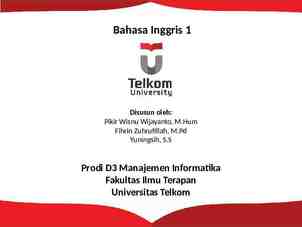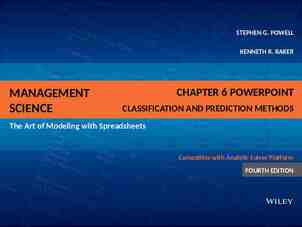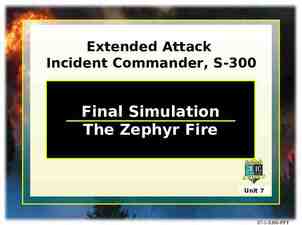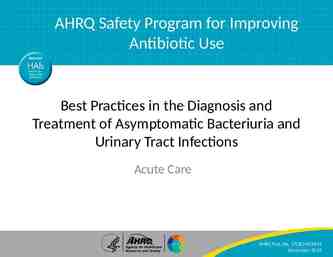doc.: IEEE 802.11-15/0338r0 Discussions on the Definition of
20 Slides452.51 KB

doc.: IEEE 802.11-15/0338r0 Discussions on the Definition of CCA Threshold Date: 2015-03-07 Authors: Name Affiliations Address Akira Kishida NTT Yasuhiko Inoue 1-1 Hikari-no-oka, Yokosuka, Kanagawa 2390847 Japan Shoko Shinohara Phone email [email protected] [email protected] [email protected] Hiroto Yasuda NTT DOCOMO 3-5, Hikarino-Oka, Yokosuka-shi, Kanagawa, 239-8536, Japan [email protected] om Koichi Ishihara NTT 1-1 Hikari-no-oka, Yokosuka, Kanagawa 2390847 Japan [email protected] Yasushi Takatori Yusuke Asai [email protected] Akira Yamada NTT DOCOMO Yuichi Morioka Sony Corporation Submission [email protected] 3-5, Hikarino-Oka, Yokosuka-shi, Kanagawa, 239-8536, Japan [email protected] [email protected] Akira Kishida (NTT)

doc.: IEEE 802.11-15/0338r0 Abstract In the discussions of DSC/CCAC, the terms of “CCASD” and “CCA-ED” are widely used. The term of “CCA-ED”, however, has already been defined for another threshold in the IEEE 802.11 standard. Therefore, we should define the new name of the term for the threshold instead of “CCA-ED”. Submission Slide 2 Akira Kishida (NTT)

March 2015 doc.: IEEE 802.11-15/0338r0 Threshold to be Discussed A sensitivity for the minimum modulation and coding rate 20 dB (If the level of ANY signals exceeds this threshold, the receiver shall hold CCA as busy) Signal level -62 dBm This threshold is called as “CCA-ED” in some contributions. Receiver minimum input sensitivity requirments (Rate dependent) CCA-SD -82 dBm This threshold will be used for CCAC / DSC (If the level of WLAN signals exceeds this threshold, the receiver shall detect the signal and hold CCA as busy) The name of this threshold seems to be agreed. Actual receiver minimum input sensitivity (Implementation matter) Submission A sensitivity for the minimum modulation and coding rate *This figure shows the case in 20MHz PPDU Slide 3 Akira Kishida (NTT)

doc.: IEEE 802.11-15/0338r0 The definitions of “CCA-ED” in the Standard CCA-ED in the IEEE 802.11-2012 and 11ac-2013 (See Appendix) CCA-ED is the threshold that is used for specific operation bands to improve spectral sharing. This is not a threshold to which CCA detects the channel as Busy for any signal. This threshold is not used for license-exempt operation. What we call “CCA-ED” is not been defined in the standard. This threshold is mentioned as follows in the standard; ‒ The receiver shall issue a PHY-CCA.indication(BUSY, {primary}) for any signal that exceeds a threshold equal to 20 dB above the minimum modulation and coding rate sensitivity (–82 20 –62 dBm) in the primary 20 MHz channel. We should define the new name for this threshold. Submission Slide 4 Akira Kishida (NTT)

doc.: IEEE 802.11-15/0338r0 Proposal The new terminology of the threshold that indicates the level of 20 dB above the minimum modulation and coding rate sensitivity should be defined. CCA-AS (Any Signal) CCA-AD (Any signal Detect) CCA-BS (BuSy) Any suggestion? Submission Slide 5 Akira Kishida (NTT)

doc.: IEEE 802.11-15/0338r0 Conclusions To avoid confusion, we propose to change the terminology of “CCA-ED”. The new name of the threshold that indicates the level of 20 dB above the minimum modulation and coding rate sensitivity should be defined in TG ax. Some candidate names are proposed as examples. Submission Slide 6 Akira Kishida (NTT)

doc.: IEEE 802.11-15/0338r0 Straw Poll 1 Do you agree with defining new terminology of the threshold that indicates the level of 20 dB above the minimum modulation and coding rate sensitivity? Y: N: A: Submission Slide 7 Akira Kishida (NTT)

doc.: IEEE 802.11-15/0338r0 Straw Poll 2 What name is most suitable for the terminology if you agree with defining the name of the threshold? (1) CCA-AS (Any Signal) (2) CCA-AD (Any signal Detect) (3) CCA-BS (BuSy) (4) Others (1): (2): (3): (4): Submission Slide 8 Akira Kishida (NTT)

doc.: IEEE 802.11-15/0338r0 Appendix (The definitions in the IEEE 802.11 standards) Submission Slide 9 Akira Kishida (NTT)

doc.: IEEE 802.11-15/0338r0 Definitions of “CCA-ED” in the Standard (1) 18.3.10.6 CCA requirements (IEEE 802.11-2012) For the operating classes requiring CCA-Energy Detect (CCAED), CCA shall also detect a medium busy condition when CCA-ED detects a channel busy condition. For improved spectrum sharing, CCA-ED is required in some bands. The behavior class indicating CCA-ED is given in Table D-2. The operating classes requiring the corresponding CCA-ED behavior class are given in E.1. A STA that is operating within an operating class that requires CCA-ED shall operate with CCA-ED. The CCA-ED shall not be required for license-exempt operation in any band. CCA-ED shall indicate a channel busy condition when the received signal strength exceeds the CCA-ED threshold as given by dot11OFDMEDThreshold. The CCA-ED thresholds for the operating classes requiring CCA-ED are Slide subject to the criteria in D.2.5.Akira Kishida (NTT) Submission 10

doc.: IEEE 802.11-15/0338r0 Definitions of “CCA-ED” in the Standard (2) 22.3.19.5.2 CCA sensitivity for operating classes requiring CCA-ED (IEEE 802.11ac-2013) For the operating classes requiring CCA-Energy Detect (CCA-ED), CCA shall also detect a medium busy condition when CCA-ED detects a channel busy condition. For improved spectrum sharing, CCA-ED is required in some bands. The behavior class indicating CCA-ED is given in Table D-2. The operating classes requiring the corresponding CCA-ED behavior class are given in Annex E. A STA that is operating within an operating class that requires CCA-ED shall operate with CCA-ED. The CCA-ED is not required for license-exempt operation in any band. CCA-ED shall indicate a channel busy condition when the received signal strength exceeds the CCA-ED threshold as given by dot11OFDMEDThreshold for the primary 20 MHz channel and the secondary 20 MHz channel, dot11OFDMEDThreshold 3 dB for the secondary 40 MHz channel, and dot11OFDMEDThreshold 6 dB for the secondary 80 MHz channel. The CCA-ED thresholds for the operating classes requiring CCA-ED are subject to the criteria in D.2.5. NOTE—The requirement to issue a CCA signal busy as stated in 22.3.19.5.3 and 22.3.19.5.4 is a mandatory energy detect requirement on all Clause 22 receivers. Support for CCA-ED is an additional requirement that relates specifically to the sensitivities described in D.2.5. Submission Slide 11 Akira Kishida (NTT)

doc.: IEEE 802.11-15/0338r0 Criteria of CCA-ED D2.5 CCA-ED threshold (IEEE 802.11-2012) For OFDM PHY operation with CCA-ED, the thresholds shall be less than or equal to –72 dBm for 20 MHz channel widths, –75 dBm for 10 MHz channel widths, and –78 dBm for 5 MHz channel widths (minimum sensitivity for BPSK, R 1/2 10 dB in Table 18-14). D2.5 CCA-ED threshold (IEEE 802.11ac-2013) CCA-ED thresholds for operation in specific bands are given in E.2 where they differ from the values in PHY clauses. CCA-ED thresholds for operation in license-exempt bands are stated in PHY clauses. Submission Slide 12 Akira Kishida (NTT)

doc.: IEEE 802.11-15/0338r0 Operating Classes Requiring CCA-ED (1) Submission Slide 13 Akira Kishida (NTT)

doc.: IEEE 802.11-15/0338r0 Operating Classes Requiring CCA-ED (2) Submission Slide 14 Akira Kishida (NTT)

doc.: IEEE 802.11-15/0338r0 Related Definitions in the Standard (1) 18.3.10.2 Receiver minimum input sensitivity (IEEE 802.11-2012) The packet error ratio (PER) shall be less than 10% for a PSDU with the rate dependent input levels. 18.3.10.2 The start of a valid OFDM transmission (IEEE 802.11-2012) The start of a valid OFDM transmission at a receive level equal to or greater than the minimum modulation and coding rate sensitivity. (–82 dBm for 20 MHz channel spacing) The receiver shall hold the CCA busy for any signal 20 dB above the minimum modulation and coding rate sensitivity. (–62 dBm for 20 MHz channel spacing) 22.3.19.5.3 CCA sensitivity for signals occupying the primary 20 MHz channel (IEEE 802.11ac-2013 )] PPDU that occupies at least the primary 20 MHz channel shall be detected according to under the conditions listed in Table 22-27 within a period of aCCATime and hold the CCA signal busy for the duration of the PPDU. The receiver shall issue a PHY-CCA.indication(BUSY, {primary}) for any signal that exceeds a threshold equal to 20 dB above the minimum modulation and coding rate sensitivity (–82 20 –62 dBm) in the primary 20 MHz channel . Submission Slide 15 Akira Kishida (NTT)

doc.: IEEE 802.11-15/0338r0 Related Definitions in the Standard (2) 18.3.10.2 Receiver minimum input sensitivity (IEEE 802.11-2012) The packet error ratio (PER) shall be 10% or less when the PSDU length is 1000 octets and the rate dependent input level is as shown in Table 18-14. The minimum input levels are measured at the antenna connector (noise factor of 10 dB and 5 dB implementation margins are assumed). Submission Slide 16 Akira Kishida (NTT)

doc.: IEEE 802.11-15/0338r0 Related Definitions in the Standard (3) 22.3.19.1 Receiver minimum input sensitivity (IEEE802.11ac-2013) The packet error ratio (PER) shall be less than 10% for a PSDU length of 4096 octets with the rate dependent input levels listed in Table 22-25. The test in this subclause and the minimum sensitivity levels specified in Table 22-25 apply only to non-STBC modes, 800 ns GI, BCC, and VHT PPDUs. Submission Slide 17 Akira Kishida (NTT)

doc.: IEEE 802.11-15/0338r0 Related Definitions in the Standard (4) 18.3.10.6 CCA requirements (IEEE 802.11-2012) The start of a valid OFDM transmission at a receive level equal to or greater than the minimum modulation and coding rate sensitivity (–82 dBm for 20 MHz channel spacing, –85 dBm for 10 MHz channel spacing, and –88 dBm for 5 MHz channel spacing) shall cause CS/CCA to indicate busy with a probability 90% within 4 μs for 20 MHz channel spacing, 8 μs for 10 MHz channel spacing, and 16 μs for 5 MHz channel spacing. If the preamble portion was missed, the receiver shall hold the CCA signal busy for any signal 20 dB above the minimum modulation and coding rate sensitivity (–62 dBm for 20 MHz channel spacing, –65 dBm for 10 MHz channel spacing, and –68 dBm for 5 MHz channel spacing). Submission Slide 18 Akira Kishida (NTT)

doc.: IEEE 802.11-15/0338r0 Related Definitions in the Standard (5) 22.3.19.5.3 CCA sensitivity for signals occupying the primary 20 MHz channel (IEEE 802.11ac-2013) The PHY shall issue a PHY-CCA.indication(BUSY, {primary}) if one of the conditions listed in Table 22-27 is met in an otherwise idle 20 MHz, 40 MHz, 80 MHz, 160 MHz, or 80 80 MHz operating channel width. With 90% probability, the PHY shall detect the start of a PPDU that occupies at least the primary 20 MHz channel under the conditions listed in Table 22-27 within a period of aCCATime (see 22.4.4) and hold the CCA signal busy (PHY CCA.indicate(BUSY, channel-list)) for the duration of the PPDU. The receiver shall issue a PHY-CCA.indication(BUSY, {primary}) for any signal that exceeds a threshold equal to 20 dB above the minimum modulation and coding rate sensitivity (–82 20 –62 dBm) in the primary 20 MHz channel within a period of aCCATime after the signal arrives at the receiver's antenna(s); then the receiver shall not issue a PHY-CCA.indication(BUSY,{secondary}), PHYCCA. indication(BUSY,{secondary40}), PHY-CCA.indication(BUSY, {secondary80}), or PHYCCA.indication(IDLE) while the threshold continues to be exceeded. Submission Slide 19 Akira Kishida (NTT)

doc.: IEEE 802.11-15/0338r0 Related Definitions in the Standard (6) Submission Slide 20 Akira Kishida (NTT)






